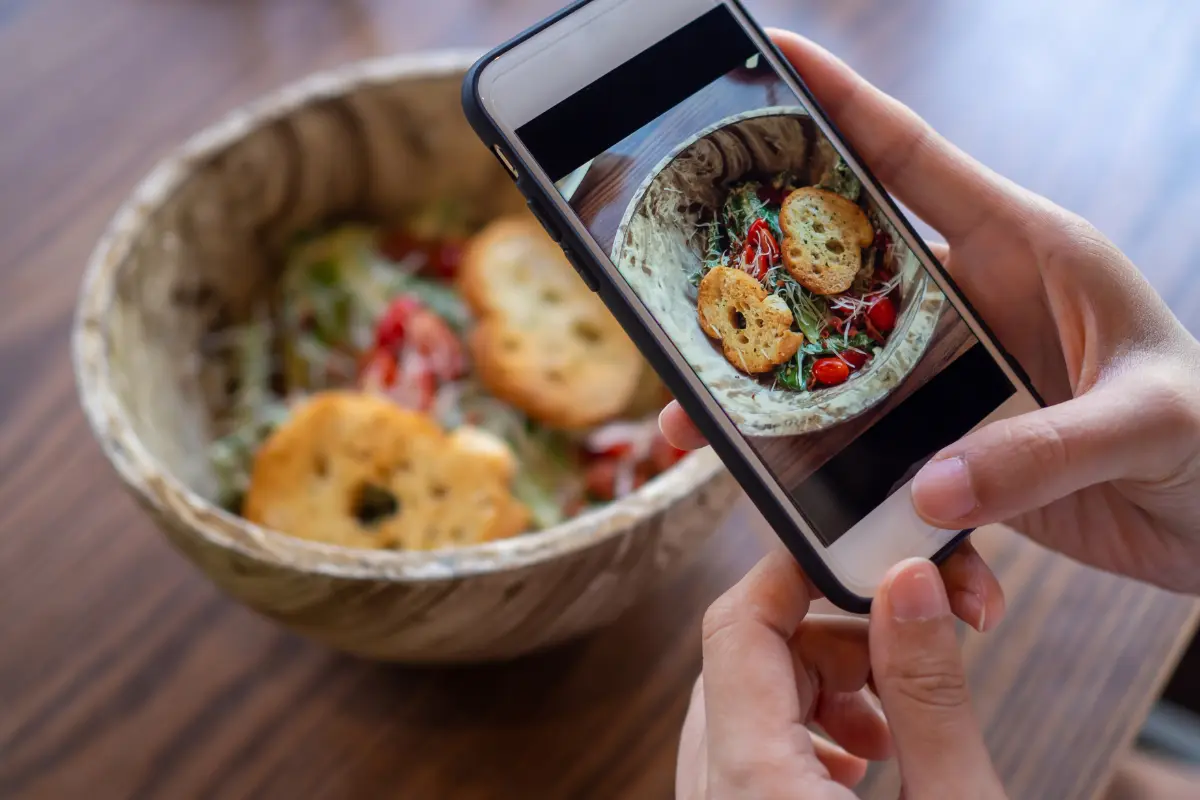
Struggling to eat healthy on a budget? You're not alone.
Spoiler alert: eating healthy doesn’t have to break the bank.
You’re likely here because you started your nutrition and health journey, began creating your macro-friendly shopping list, hit the grocery store, and then thought to yourself, “Wait, why is this so expensive?” or, “Can I even afford to eat this way?”
It’s easy to think that you won't be able to follow your nutrition plan and stick to your grocery budget. But with a little planning and the right strategies, you can nourish your body without breaking the bank. This guide will show you how to eat healthy on a budget, offering practical tips for meal planning, smart grocery shopping, and affordable food choices.
Advertisement
How to Grocery Shop on a Budget
Before diving into what to look for in-store, set a realistic food budget for healthy eating. Then, do a little survey of what options are available.
Though delicious, fancier stores like Whole Foods can quickly cost you your whole paycheck. Chain supermarkets like Kroger, Hannaford, Walmart, and Publix (to name a few) will likely be more cost-effective. Novelty grocery stores like Trader Joe’s can give you even more bang for your (literal) buck.
Before diving into our budget-friendly tips, make sure you've decided what affordable healthy eating means to you. Map out your monthly expenses and determine how much you can spend on groceries weekly. It is okay if this takes some trial and error, but walking into a store budget-blind is a sure way to experience sticker shock as the bill racks up.
Once you have your budget, use the tips for saving money while grocery shopping below to maximize your allotted spend.
Advertisement
Budget-Friendly Nutrition Tips and Tricks
1. Stick with Simple Meals and Ingredients
Think + veggie + starch. Buying several ingredients for one meal isn’t realistic when you’re on a tight budget, so load up on plain staples and season them to add variety. Mustard, soy sauce, hot sauce, taco seasoning, ranch seasoning, and various spices are great places to start.
2. Eat In-Season Produce
Buying produce when it's in season can be much cheaper because it’s more readily available. This can be a great way to access the most affordable healthy foods. For example, tomatoes and cucumber are in season in the summer, and zucchini and corn are in season in the fall. You can also check local Farm Stands for in-season produce and buy straight from the source (while supporting your community). Apps like Farmish and SimplyLocal can help you search for stands near you.
3. Buy Generic and Store Brand
Buy EVERYTHING in generic. EVERYTHING. Store-brand groceries are up to 40% cheaper than name-brand mostly due to name brands needing to offset marketing costs.
4. Drop Your Grocery Store Bias
Did you know Walmart is the leading grocery retailer for organic foods? Check places like Walmart, Aldi, or even Amazon for packaged items. You might have to drop your bias surrounding what you consider a “good” grocery store. Most foods at most grocery stores are sourced from the exact same place as the store across the street.
5. Price Check!
Don’t be afraid to shop around the store for a few minutes before you grab a cart. Better yet, try a few different stores over a couple of weeks and compare prices as you go. When every dollar counts, saving $0.50 on multiple items on your list really does make a difference.
Advertisement
Quick Tip: Price tags for food almost always include a “per oz” price. This is an easy way to compare prices across brands or stores.
6. Online Order for Pickup
If you know how much money you have to spend on groceries each week, try ordering online so you can keep close track of your cart total. This makes it easy to stay focused on your list and avoid tempting (expensive) extras.
7. Go for Canned and Frozen Options
Frozen and canned fruits and vegetables are often as nutritious as fresh options and can be much more budget-friendly. They also last longer, which means they are helpful when trying to stick to a budget for healthy food.
8. Try Cheaper Meat Cuts
Minced beef, stewing cuts, round/rump steak, chicken thighs, whole chickens, and organs are more affordable than fancier cuts. In these cases, it is important to remember that these options tend to either be extra-lean or super-fatty. This article will teach you how to cook lean meat that isn’t dry or tough. For fattier cuts, ensure it fits your macros, and trim off fat if necessary!
9. Only Buy Expensive Items in Bulk
Frozen protein, frozen veggies, and protein powder are good foods to buy in bulk. And remember, you can always buy these options fresh and throw them in your freezer at home.
Advertisement
Avoid the snack aisles, as these are typically not priced to reflect a bulk purchase! (Plus, big bags of snack foods can do a number on your macros!).
If money is tight, it’s worth checking how much you’re saving and only buying foods in bulk that is truly a better deal. Remember to check the price per pound!
10. Create a Weekly Meal Plan for Affordable, Healthy Meals
Planning balanced meals for the week ensures you're not buying excess food that you won't eat or resorting to costly takeout options. Base your meals around what's on sale, and try to incorporate ingredients that can be used in multiple ways. This is a simple method to keep within your budget for healthy eating.
11. Schedule Meal Prep
Pre-chopping, portioning, or cooking straight away will help you stick to your plan instead of forgetting foods in the back of your fridge or opting for take-out after a busy night when you have no motivation to cook (read: more money AND more waste!). Our Ultimate Meal Prep Guide will help you create a prepping strategy that works best for your goals and your schedule.
12. Cook at Home
Cooking at home gives you full control over what ingredients go into your meals, allowing you to choose healthy, budget-friendly options. It also saves you money that would be spent on takeout or eating out.
Advertisement
Reduce Waste to Save Money on Healthy Foods
Most of the money lost on groceries happens because people rarely eat all the food they buy. Especially when we’re chatting about buying in bulk, the next question is, “What if I buy all this food and don’t eat it fast enough?”
Here are some simple strategies to reduce food waste (and less money spent on food in general):
Get creative: If there is peanut butter stuck at the bottom of your jar, add oats and milk to make PB overnight oats for breakfast tomorrow. Have random restaurant leftovers? Turn it into a salad or sandwich or add sauce to make a tasty pasta dish.
Prep, prep, prep: When you bring groceries home, prep them and keep the healthy choice, the easy choice. Pre-chopping, portioning or cooking straight away will help you stick to your plan instead of forgetting these foods in the back of your fridge or opting for take-out after a busy night when you have no motivation to cook (read: more money AND more waste!).
Advertisement
Freeze it: If you bought too many fresh fruits and veggies and can’t eat them fast enough, throw them in the freezer before they go bad. You can use them later for sauteing, stir-fries, or microwave meals! Make sure to chop them before they freeze if you want them in pieces later!
Stay organized and tidy: Labels, jars and shopping lists help you track what you currently have so you’re not doubling up or forgetting what foods are already in your fridge, freezer and pantry. Make sure to keep your fresh food in the crisper to keep it fresher, longer and putting avocado and other veggies in the fridge can slow their ripping process if you need more time to work them into your nutrition plan!
Cook nose-to-tail: Did you know that a lot of an animal is left behind because consumers only favor certain cuts or don’t know how to properly utilize everything they buy? Explore unique cuts, organs (mmm chicken giblets and beef tongue!) and use leftover bones to make broth and soup. These ‘forgotten’ cuts are actually really, really nutritious, super affordable, and nose-to-tail cooking has a very positive effect on the environment. Waste not, want not!
Get Grocery Shopping!
Eating healthy on a budget is achievable with creative strategies and planning. By implementing these tips, from meal planning to making mindful grocery choices and cooking at home, you’ll be well on your way to nourishing your body without overspending. Start today and take control of both your health and your wallet!
Advertisement
Get a WAG Coach
Working Against Gravity has led the macro tracking and health space for over a decade. Our team doesn’t just understand the science of nutrition—we’ve spent years mastering the art of tailoring it to fit your life. That means no cookie-cutter plans, just real strategies that have worked for over 30,000 people.
Choose from our membership options and start working with an expert 1-on-1 coach today.



